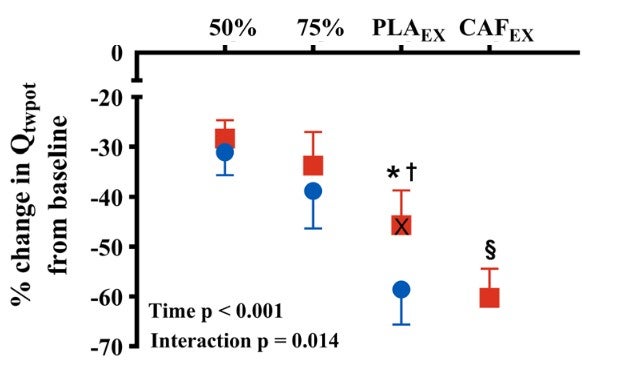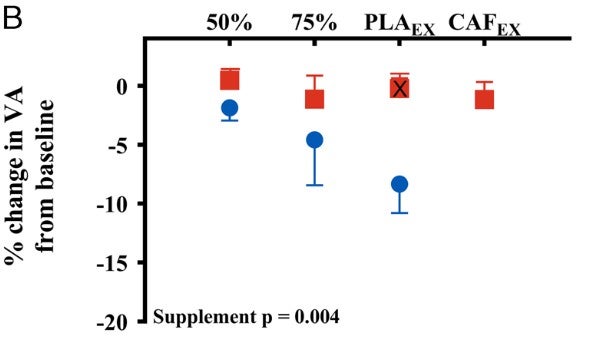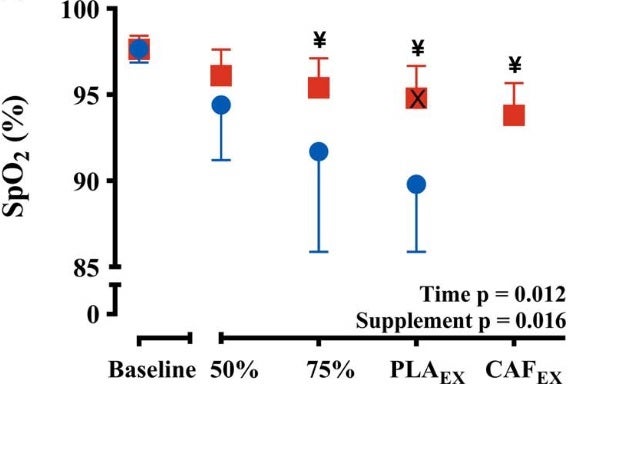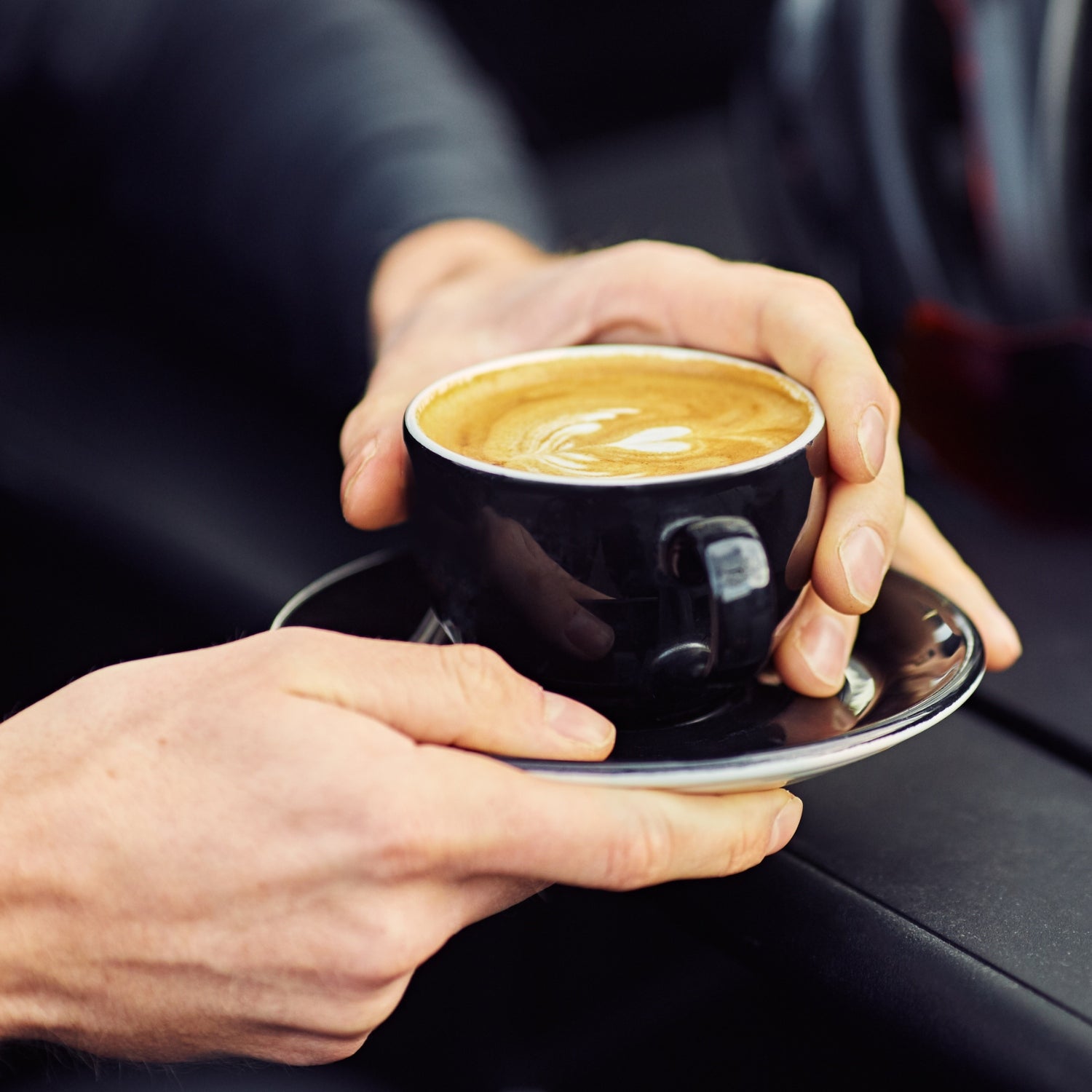Compared to, say, ice baths, it doesn’t take a lot of convincing for people to embrace caffeine as an essential performance aid. After all, there’s plenty of favorable research, and 90 percent of people already guzzle it daily. Rebranding your morning brew as a pre-race supplement isn’t a big lift. But caffeine’s ubiquity sometimes obscures the big gaps in what we know about it—including, as highlights, the very basic question of how it works.
The first time I wrote about caffeine as a performance-booster was way back in 2008. Back then, most people thought that caffeine was simply a stimulant, or that it enhanced fat-burning to give muscles more energy. But the evidence didn’t back up either theory, a leading researcher named Terry Graham explained. Instead, Graham thought the magic happened in the muscle fibers themselves. “If I were to place electrodes on your muscle and start to stimulate it so that your muscle is contracting and your brain’s not involved,” , “I can still see an effect.”
was also gaining support around the same time. Caffeine blocks receptors that detect the presence of adenosine, a molecule associated with fatigue as it builds up in the brain. In this picture, caffeine acts in the brain to make any given physical exertion feel easier, which helps explain why it’s effective for all-out bursts of strength as well as prolonged endurance, and why it has like enhanced attention and vigilance. This is the theory that has seemed most plausible to me.
So which is it? The new study, a small one published in Medicine & Science in Sports & Exercise by a team from six Brazilian universities working with David Bishop of Australia’s Victoria University, suggests that it might be both—and that there might be an additional factor related to oxygen levels in your blood.
The study involved ten cyclists who completed time-to-exhaustion tests at a predetermined intensity they could sustain for around five minutes. Before and after the rides, they were wired up with a bunch of electrodes and other equipment to assess the function of their brains, central nervous systems, muscles, and circulatory systems. Previous studies have tried this sort of thing, and have that caffeine doesn’t make any difference in muscle function or fatigue. But that could be because they only looked before and after the exercise. It’s not surprising that everyone is equally exhausted after they finish. But what’s happening during exercise that enables caffeine-fueled riders to last longer?
To find out, the Brazilian researchers brought their subjects into the lab on nine separate occasions. They had them do similar rides each time, sometimes after taking 5 milligrams per kilogram of caffeine an hour before the ride and sometimes taking a placebo. In some cases, they stopped the ride prematurely, at either 50 percent or 75 percent of the time achieved in a baseline test, in order to assess the riders’ midrace neuromuscular function. In the very last trial, the riders were given caffeine but then stopped at the exact time they’d given up in a previous placebo trial, in order to get an apples-to-apples comparison of the effects of riding at a given power for a given duration with or without caffeine.
The results and analysis are complex, but there are a few key points that stand out. First, caffeine worked. The riders lasted 14 percent longer when they got the real stuff (5 minutes and 55 seconds) rather than the placebo (5 minutes and 14 seconds). That’s comparable to previous studies, and suggests if the format was a race or time trial instead of a time-to-exhaustion ride.
Second, as Terry Graham told me back in 2008, caffeine did seem to help the muscles themselves. Here are the results from electrically stimulating the quadriceps muscles, showing how much the evoked muscle contraction weakened as the riders fatigued. The blue dots show the placebo trials, and the red squares show the caffeine trials:

Halfway through the trial (at 50 percent), there’s not much difference. But by the 75-percent mark, the muscles have lost nearly 40 percent of their initial force in the placebo trial, compared to less than 35 percent with caffeine. By the time the riders reach exhaustion in the placebo trial (PLAex), their quads are shot, with the electric jolt generating 60 percent less force than when they were fresh. With caffeine, however, the loss is only about 45 percent after the exact same amount of time at the exact same pace/power. Eventually, the riders reach exhaustion even in the caffeine trial (CAFex), by which time their quads are just as shot as they were at exhaustion in the placebo trial. In other words, it looks as though caffeine delays the loss of muscle function—and perhaps, though this remains controversial, the moment the riders give up is dictated by finally reaching that higher level of muscle fatigue.
But the brain—or, more broadly, the central nervous system that generates and transmits the signal telling the muscles to contract—also seems to play a role. If you ask a subject to contract their muscle as hard as possible, and then electrically stimulate the same muscle, the additional force produced by the shock enables you to calculate “voluntary activation,” which is a measure of how strong a signal from the brain is reaching the muscle. Here’s what the voluntary activation (VA) looked like in the same trials:

In this case, VA declined during the placebo trials: the more tired the subjects got, the weaker the signals from their brain became. With caffeine, on the other hand, the signals never declined. Even right after reaching exhaustion, their brains were still enthusiastically exhorting their muscles to contract. Interpreting this finding is tricky, because VA isn’t just a reflection of what signals your brain sends. It also depends on how efficiently the message is transmitted through various parts of your brain and down your spinal cord, both of which might be enhanced by caffeine. But it’s clearly not just the muscles that are affected by caffeine.
And there’s one additional wrinkle, which is the most novel finding in the study. Here’s what the subjects’ oxygen saturation, as measured with a pulse oximeter attached to their right index finger, looked like:

Caffeine seems to keep oxygen flowing through their arteries, with only a mild decrease at exhaustion compared to the steady decline seen in the placebo trials. It’s not clear why this happens, but it’s not too much of a stretch to suggest that having more oxygen available might be one of the reasons the muscles keep working better during the caffeinated rides.
All of this starts to feel like one of those Agatha Christie novels where all 14 major characters turn out to have a dark secret that makes them a plausible suspect in the murder. If caffeine does everything, how do we figure out which effects are the ones that matter? At this point, all I can really conclude is that it’s probably not as simple as the adenosine-related “caffeine just makes everything feel easier” theory—though, for the record, the new study did indeed find that caffeine also reduced perceived effort.
In the meantime, researchers continue to churn out new studies exploring caffeine’s ergogenic effects on everything from and to , so after wading through all those graphs it’s worth concluding with some up-to-date practical guidance. The , which many athletes , is three to six milligrams of caffeine per kilogram of body weight, which works out to 200 to 400 milligrams for a 150-pound person, taken an hour before your event starts. Higher doses carry a significant risk of like racing heart and sleep problems, so some researchers suggest that three milligrams/kilogram may be better than six. More generally, we all metabolize caffeine at different rates, so it’s likely that caffeine actually hurts performance for some slow metabolizers. If you’re a regular user, you probably for a week to get a good boost in your race, though there might be a slight gain if you do.
And finally, I can’t help thinking back to something Terry Graham told me back in 2008. He’d been studying caffeine for years, and all the while was running marathons. But he’d never once taken caffeine prior to a race. As a recreational athlete, he didn’t feel the need to metaphorically move the finish line a bit closer, and as a caffeine researcher he felt that was an important perspective to share. Given that caffeine is so widely used in day-to-day life and is not restricted by anti-doping agencies, I have no objections to its use. But Graham’s words have stuck with me ever since, and have made me think carefully about what steps I do and don’t choose to take in pursuit of performance.
For more Sweat Science, join me on and , sign up for the , and check out my book .


